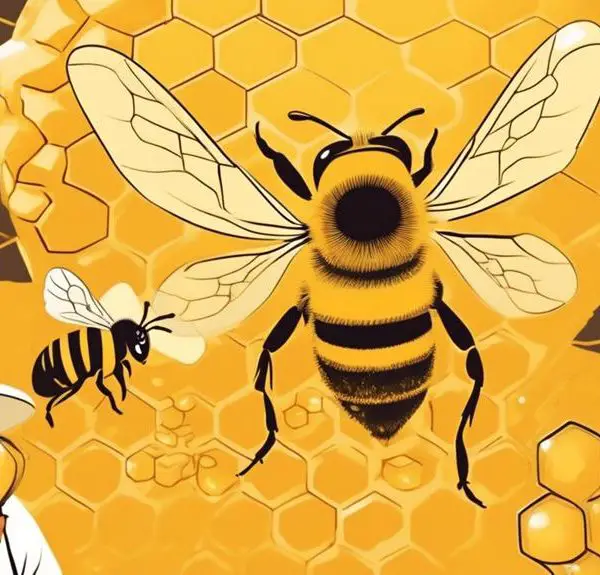Marvel at the resilience or vulnerability of beech trees to honey fungus in this intriguing exploration of nature's battles.
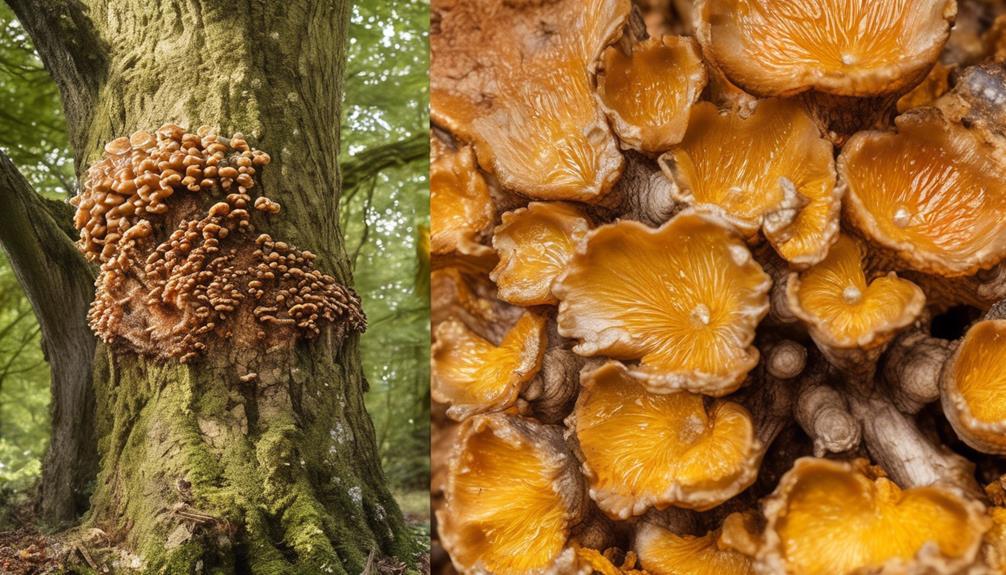
Are Beech Trees Resistant to Honey Fungus
You're walking through a forest, admiring the towering beech trees, and suddenly you spot the telltale signs of honey fungus. You've heard about this destructive fungus and its impact on a variety of tree species, but what about the beech trees? Are these majestic trees immune to this disease, or do they fall prey just like the others?
As you continue your walk, you find yourself wondering about the nature of beech trees' resistance, or lack thereof, to honey fungus. Let's explore this intriguing topic together, shall we?
Key Takeaways
- Beech trees have natural antifungal tannins that contribute to their resistance to honey fungus.
- Environmental conditions play a significant role in determining the susceptibility of beech trees to honey fungus.
- Beech trees employ a multifaceted defense mechanism involving phytochemicals, physical barriers like thick bark, and a robust immune system.
- Preventive measures such as maintaining tree health, strategic pruning, and using biological control agents can help protect beech trees from honey fungus.
Understanding Honey Fungus
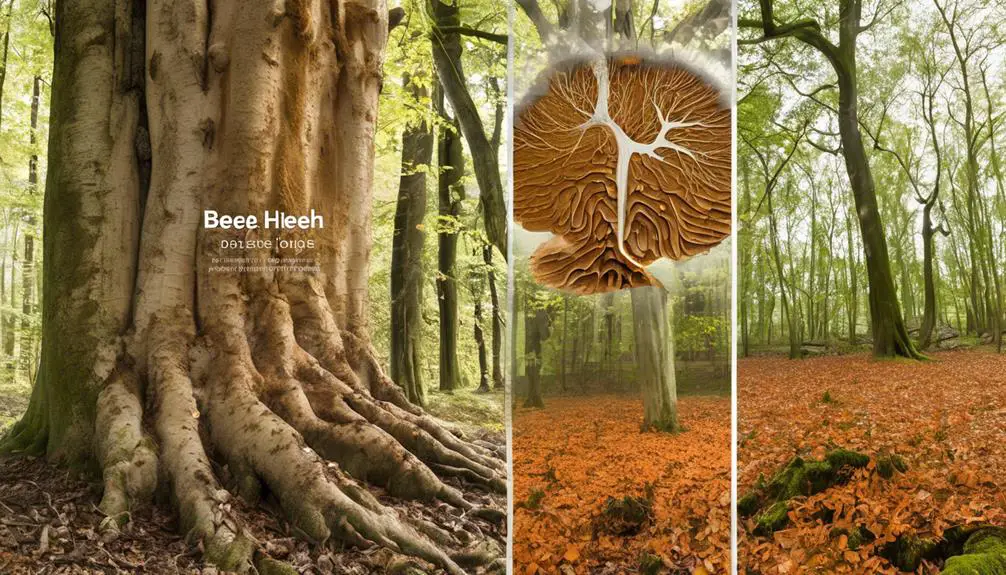
To fully grasp the relationship between beech trees and honey fungus, you first need to understand what honey fungus is and how it operates. Honey fungus, scientifically known as Armillaria, is a genus of parasitic fungi that live on trees and woody shrubs. It's renowned for its destructive potential, often decimating anything in its path by feeding on the roots of the host plant.
This fungus doesn't operate like your typical mushroom. Instead, it uses rhizomorphs – thread-like structures that are capable of transporting nutrients and fungal cells across long distances. These rhizomorphs infiltrate the host's root system, sapping the life out of it. You're dealing with a parasite that's not only destructive but also highly strategic.
However, it's not all doom and gloom. Honey fungus plays a crucial role in the ecosystem by breaking down dead wood and returning essential nutrients to the soil. It's a fascinating organism that embodies the harsh reality of nature: survival of the fittest. Understanding this fungus is key to appreciating its interaction with beech trees and potentially devising strategies to curb its destructive tendencies.
Characteristics of Beech Trees
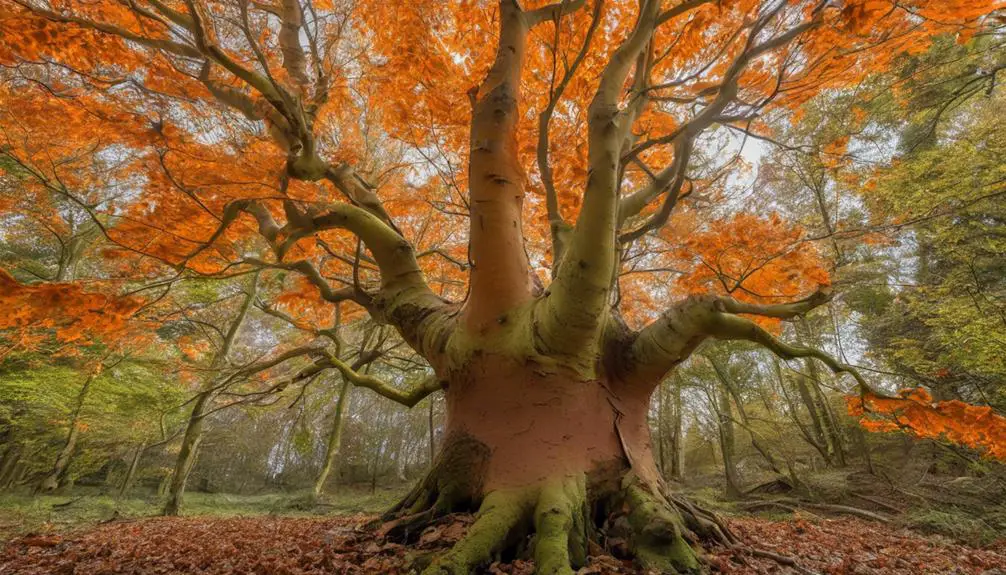
Beech trees, known for their smooth grey bark and vibrant foliage, have unique characteristics that play a crucial role in their interaction with honey fungus. These trees are deciduous, shedding their leaves annually, and can reach heights of up to 40 meters.
Their adaptive nature allows them to thrive in varying types of soil, from sandy to clay, acidic to alkaline. However, their preference leans towards well-drained, sandy soil. They also need ample sunlight, although they're quite tolerant to shade.
Let's put some of these features into perspective:
Feature | Description | Beech Tree Specifics |
|---|---|---|
Height | Trees can vary greatly in height | Up to 40 meters |
Soil Preference | Different tree species prefer different soil types | Sandy, well-drained |
Sunlight Needs | Amount of sunlight a tree needs daily | High, but shade tolerant |
Leaf Type | Whether a tree is evergreen or deciduous | Deciduous |
Understanding these characteristics is key to knowing how beech trees interact with honey fungus. For instance, their preference for well-drained soils might influence their susceptibility to this fungus. So, let's delve deeper into the interaction between the two in the next section.
The Beech Tree-Honey Fungus Interaction
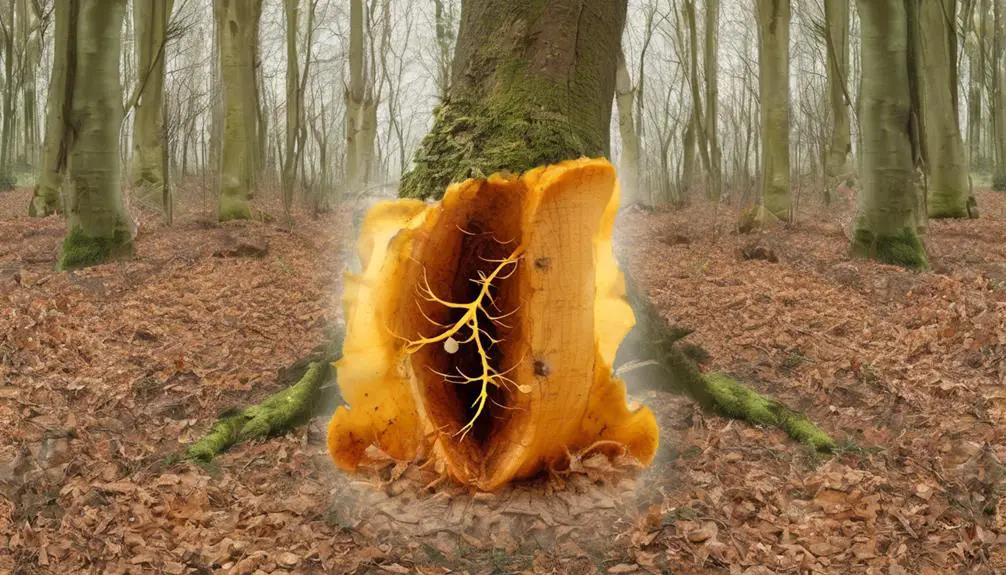
Diving into the heart of the matter, you'll find that the interaction between beech trees and honey fungus is a complex dance of nature, deeply rooted in the tree's characteristics and environmental conditions. The honey fungus, a parasitic species of Armillaria, thrives on decaying wood in the base of trees, including beech.
You might wonder, what makes beech trees a suitable host? Well, it's the tree's natural aging process. As beech trees age, they tend to develop hollows and cavities, which act as an ideal habitat for the honey fungus to colonize.
However, the tree's resistance to the fungus isn't entirely futile. Beech trees possess a high concentration of tannins, chemicals known for their antifungal properties. This natural defense mechanism may offer some level of protection against the honey fungus.
Yet, you must consider the environmental conditions. In damp, cool climates, the fungus is more likely to flourish, regardless of the tree's inherent defenses. In such cases, even the robust beech tree becomes susceptible to honey fungus. Thus, the interaction between the beech tree and honey fungus isn't a simple one, but rather a nuanced, dynamic relationship.
Resistance Mechanisms in Beech Trees
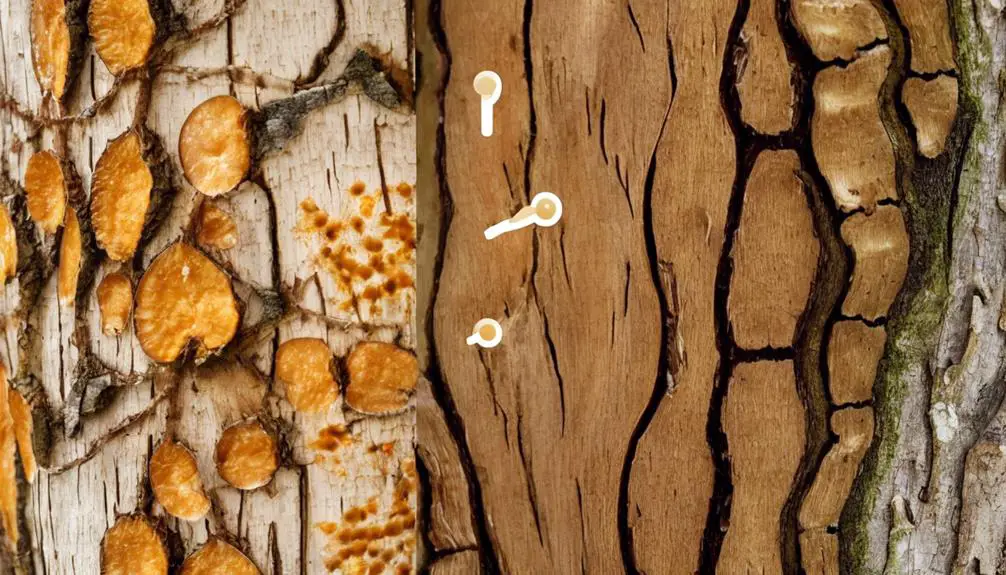
Understanding the resistance mechanisms of beech trees against honey fungus requires a deep dive into the tree's inherent qualities and defenses. You'll find that these trees have developed several strategies to fend off this harmful fungus. Let's delve into this.
First, beech trees produce chemical compounds that inhibit the growth of the fungus. These compounds, known as phytochemicals, can be toxic to the honey fungus, thereby helping the tree to resist infection.
Secondly, the beech tree's thick bark acts as a physical barrier against the honey fungus, preventing it from penetrating into the tree's trunk.
Lastly, these trees have a robust immune system that can recognize and respond to the presence of the fungus by producing defensive cells that attack and kill the invader.
These defense mechanisms are summarized in the table below:
Defense Mechanism | Description | Effect on Honey Fungus |
|---|---|---|
Production of Phytochemicals | These are toxic compounds produced by the tree | Inhibits growth of the fungus |
Thick Bark | Acts as a physical barrier | Prevents penetration into the trunk |
Robust Immune System | Recognizes and responds to the presence of the fungus | Produces defensive cells that kill the fungus |
Hence, beech trees' resistance to honey fungus is multifaceted, involving chemical, physical, and biological defenses.
Preventive Measures for Beech Trees
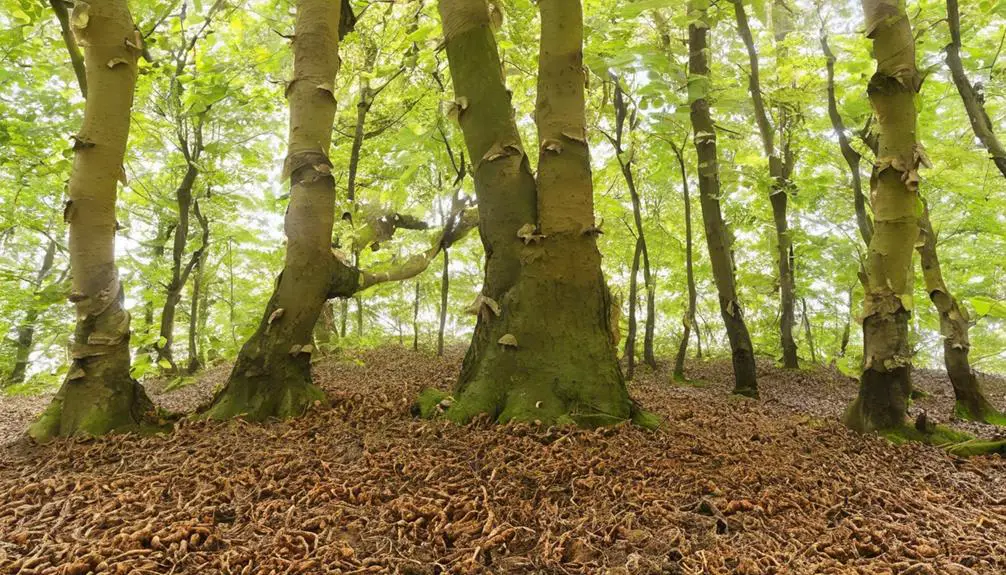
To fortify your beech trees against honey fungus, there are several preventative measures you can put into action. First, you can maintain the overall health of your trees by providing them with adequate water and nutrients, as a robust immune system can combat fungal infections more effectively. It's crucial to avoid damaging tree roots, bark, or branches, as wounds can serve as entry points for the fungus.
Your second line of defense is strategic pruning. By removing dead or diseased branches, you're reducing the fungal load and preventing its spread to healthy parts of the tree. However, it's crucial to disinfect pruning tools between each cut to avoid inadvertently spreading the fungus.
Lastly, consider the application of a biological control agent, such as Trichoderma species. These beneficial fungi colonize the same spaces as honey fungus, outcompeting them for resources and inhibiting their growth.
Never underestimate the value of early detection. Regularly inspect your beech trees for signs of honey fungus, such as black bootlace-like structures under the bark or mushrooms at the base of the tree. By taking these measures, you're giving your beech trees the best chance at resisting honey fungus.
Conclusion
In conclusion, you've learned that beech trees aren't entirely resistant to honey fungus. The interaction between the two is complex and beech trees do possess some resistance mechanisms. However, these aren't foolproof.
Therefore, it's crucial to adopt preventive measures to protect your beech trees. Remember, a healthy tree is a sturdy fortress against fungal invasions. Stay vigilant, keep your trees in check, and they'll be more likely to withstand the honey fungus's persistent advances.


